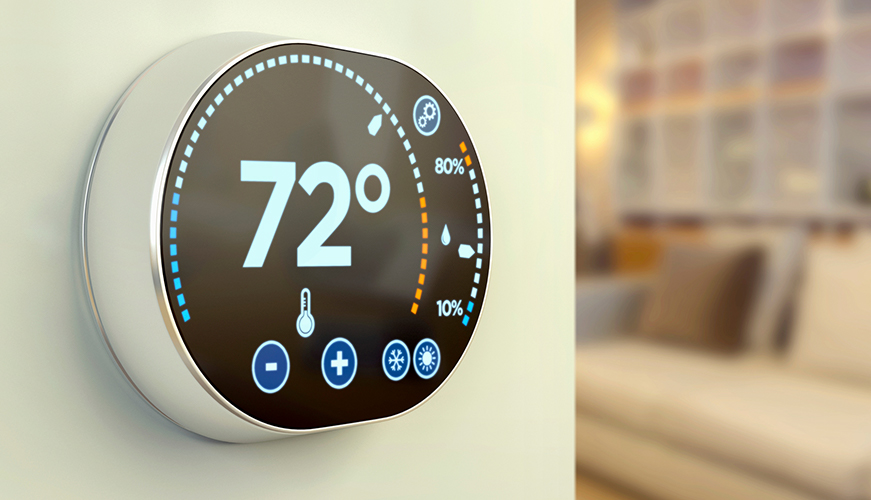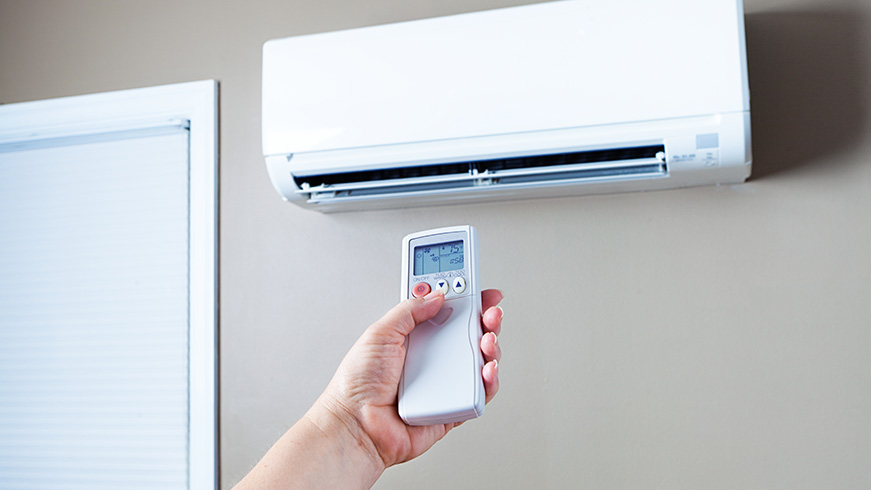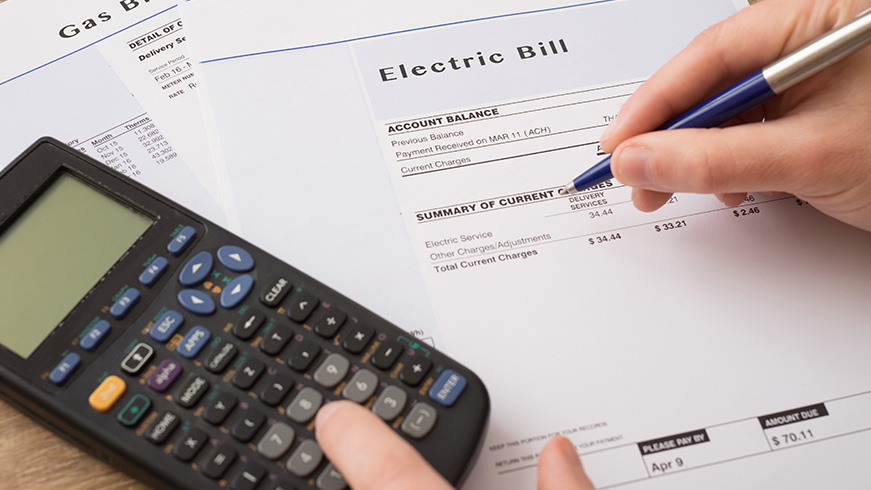There are three types of thermostats currently on the market: analog, programmable, and smart. The analog thermostat needs to be adjusted by hand whenever you want to change the temperature. The programmable thermostat can be set to change the temperature at different times of the day, such as when you’re at work or sleeping at night, and has Wi-Fi capabilities. The smart thermostat is by far the most adaptable in that the best models have Wi-Fi connectivity and are able to learn from your behaviors. The benefits of smart and programmable thermostats over analog ones are clear, as they allow for varying levels of the modern “set it and forget it” approach to in-home climate control. What are the benefits of a smart thermostat over a programmable one, though?
Programmable Thermostat
A programmable thermostat is basically an analog thermostat that allows you to preset temperature changes so you don’t have to manually adjust it. Different models offer different features, but they are all relatively similar. You can program the thermostat for a seven day cycle since your habits are most likely different during the week than on the weekends. Each day allows for a certain number of time periods (about four) that you can set and program. At night you can set the temperature to 68 degrees, then 70 for the time that you’re home in the morning, then up to 76 (in warm seasons) while you’re at work, then back down to 70 for when you get home at night before bed. Most modern programmable thermostats also have Wi-Fi capabilities so you can change these settings from your smartphone, tablet, or computer.
Smart Thermostat
A smart thermostat can offer an incredible number of features that will help you keep your home at exactly the desired temperature, save you money on your energy bill, and save energy. Once your smart thermostat is installed, it will record when you turn the temperature up and down and learn your schedule so that, eventually, the adjustments will be made automatically. For example, if you like the house to be 70 degrees when you wake up at 7:30 a.m., a smart thermostat will be able to cool the house off before you wake up. While the thermostat is in the process of learning your preferences, you’ll be able to utilize its Wi-Fi capabilities to adjust the temperature setting from your smartphone, tablet, or computer. A smart thermostat can also show you your real-time energy consumption and even how much that consumption is costing. This data is accessible to you via the applications that allow you to monitor and change the temperature remotely. In terms of saving energy, the smart thermostat can advise you on the most efficient method of heating up or cooling down your home (which isn’t actually turning the thermostat all the way up or all the way down immediately). Certain smart thermostats can even make adjustments for ambient conditions, such as lowering high humidity levels or cooling down the kitchen when a hot oven is being used.
All of these features may sound relatively complex and hard to achieve on your own, but, in reality, they’re manageable with just a little more effort when you choose a programmable thermostat over a smart one. If you’re conscientious enough to program your thermostat to make the temperature more energy efficient when you’re not home, you won’t see a remarkable amount of savings by switching to a smart thermostat. Although a programmable thermostat won’t adjust for ambient humidity or the heat produced by an oven, you can always change the temperature setting manually in those situations.
When considering whether or not to purchase a smart thermostat, you have to consider if it will increase the efficiency of the temperature regulation in your home in terms of saving money and energy. First, how long will it take you to pay off the initial investment via savings on your energy bill? Smart thermostats cost, at the least, $200. This price can skyrocket depending on the model, and some even require a professional contractor to install them. You can save up to $180 per year by installing a smart thermostat, but that’s only in extreme circumstances. The savings when transitioning from a well-regulated analog or programmable thermostat will be a lot less. Second, do you really need all of the features that a smart thermostat offers? If you already run a tight ship in terms of in-home energy usage, you won’t see much in terms of money or energy savings by switching to a thermostat that does that for you. However, you will be able to take a more hands off approach to your thermostat. Third, how long will you be using the smart thermostat for? If you’re a renter or plan on moving soon, the only way you’ll benefit from a smart thermostat is by taking it with you when you move. Otherwise, you’ve spent a significant amount of money that you won’t be able to make back.
Ultimately, smart thermostats take the hassle out of walking the tightrope of comfort and energy efficiency in your home. If you’re willing to expend the little bit of extra effort required to manage a programmable or analog thermostat, you probably don’t need a smart one. If you would prefer to install your thermostat and forget about it once it has learned your behavior, and you don’t mind spending a few hundred dollars, the smart thermostat is for you.



